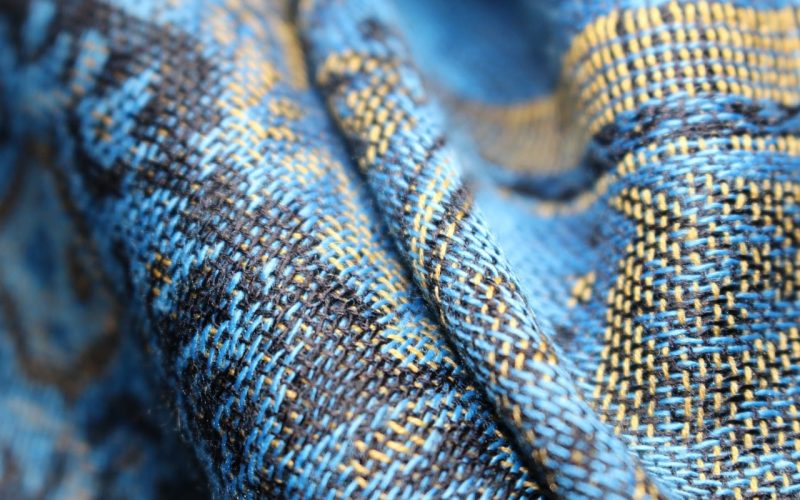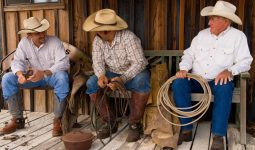Fashion can’t go out of style because there are different ways to explore fashion. Clothing is essential, but it would be boring if we all wore the same clothes pattern.
A design is made up of different types of fabric weaves. Each weave is unique and determines the durability, smoothness, and thickness of the fabric.
Manufacturers make fabric in several designs and styles, which is possible with different methods.
However, let us discuss the different types of fabric weaves that exist. Read on!
1. Plain Weave
Plain weave is the simplest type of woven fabric; it is also known as Panama, linen, or tabby weave.
This weave makes a firm fabric because it has the most frequent interlacing among other weaves. In a plain weave, the warp thread goes over the weft thread.
Each warp yarn goes over and under each weft yarn until the weaving is done. Also, this type of fabric weave is cheap to make and durable.
There are different examples of plain weave: taffeta, crepe, muslin, and organdy.
2. Satin Weave
Satin weave is one of the different types of fabric weave. It produces a smooth, glossy material with a shiny surface and dull back.
Satin weave is similar to the twill weave, with the continuous warp yarn being an exception. This means it has fewer weft threads and warp intersections.
Thus, we have a smooth surface. However, as smooth as this fabric weave is, it has its disadvantages—the fabric fibers will easily snag.
This weave does not fall under the category of solid weaves. Most people use it as bed linen, as it does not cause discomfort.
3. Basket Weave
This is another type of fabric weave. Basketweave falls under the category of plain weaves, but with an exception: it needs more than one thread.
About 12000 years ago, people weaved baskets from Rattan. Later, they discovered this style could be applied to the fabric to make a great texture.
In this weave, two warp fibers intertwine with two weft fibers. But instead of the usual over-under style in the plain weave, it has an over-over under-under style.
However, it has disadvantages. It is not durable, difficult to sew, and has a looser construction.
4. Twill Weave
A twill is among the different types of fabric weaves. The presence of diagonal parallel ribs distinguishes it.
Twill weave fabric is one of the three primary varieties of textile weaves, the other two being plain weave and satin, and it is one of the most common.
In this weave, several warp fibers alternately weave over and beneath two or more weft fibers, creating a three-dimensional effect.
Combined with other self-design weaves, it is a smooth fabric with more drape than other fabrics.
Fabrics with a twill weave are more durable than plain ones. The backside of this weave is that it is rough and will display the pattern in the opposite direction from the front.
5. Oxford Weave
Oxford weave is yet another type of fabric weave. Plain weave is created by weaving two warp ends together in a single direction over and under each pick in this version of the plain weave.
The filling yarn’s yarn size is typically twice as large as the warp yarn’s yarn size. The pinpoint Oxford is an anomaly, using the same size warp and filler yarns as the rest of the collection.
6. Jacquard Weave
Jacquard weave is among the different types of fabric weaves. It is an excellent weave with colorful patterns woven into the fabric.
This weave is made on a jacquard loom. Thus resulting in a solid and luxurious fabric. People named this fabric weave after the Frenchman who invented the jacquard loom.
His name was Joseph Marie Jacquard. Though this fabric weave is expensive, the designs are evergreen; they don’t wear out nor fade.
However, when you analyze this weave, you’ll find a mixture of satin, twill, and plain weaves. So, tell me why it wouldn’t be beautiful.
7. Herringbone Weave
Another name for this type of weave is feather twill weave. Herringbone is a pattern the ancient Roman Empire used to construct roads and other infrastructure.
They set bricks in a zig-zag pattern to form a V-shape or a crisscross design on the floor. We can make Herringbone weave by using various fabrics and yarns.
It is nothing more than a design with a distinctive V shape. The pattern is in columns, with the lines in each column leaning in the opposite direction as the previous.
Weaving garments in a herringbone pattern is common practice. It helps create high-quality jackets, high-end suits, and gowns.
8. Leno Weave
Leno weave is one of the different types of fabric weave. It’s also known as a gauze weave.
In this weave, two warp yarns are wrapped around two weft yarns to create a solid but sheer fabric.
The standard warp yarn is combined with a skeleton or ‘doup’ yarn; these twisted warp strands hold tightly to the weft, resulting in the fabric’s resilience.
9. Waffle Weave
A waffle weave is a three-dimensional weave that combines a plain weave with a twill weave. Warp and weft float mix to form the structure.
People weave it in part on tabby sections with long float ridges. They also refer to it as honeycomb weave because of the pattern it creates on the face of the material.
This weave creates a 3D effect while having a rough surface due to elevated patches on the fabric’s face. Further, they could form a diamond or square shape on the fabric’s surface.
10. Pile Weave
Pile weave is a fabric with noticeable protrusions of the component warp threads. It creates a soft pile of fabric that’s both absorbent and insulating.
As a result of this weaving, you will notice cut/uncut heaps on one or both sides of the fabric. Uncut or loop pile fabrics have loops on the cloth’s front and reverse.
Further, they use ground yarns and extra yarns for the pile in the fabric construction.








